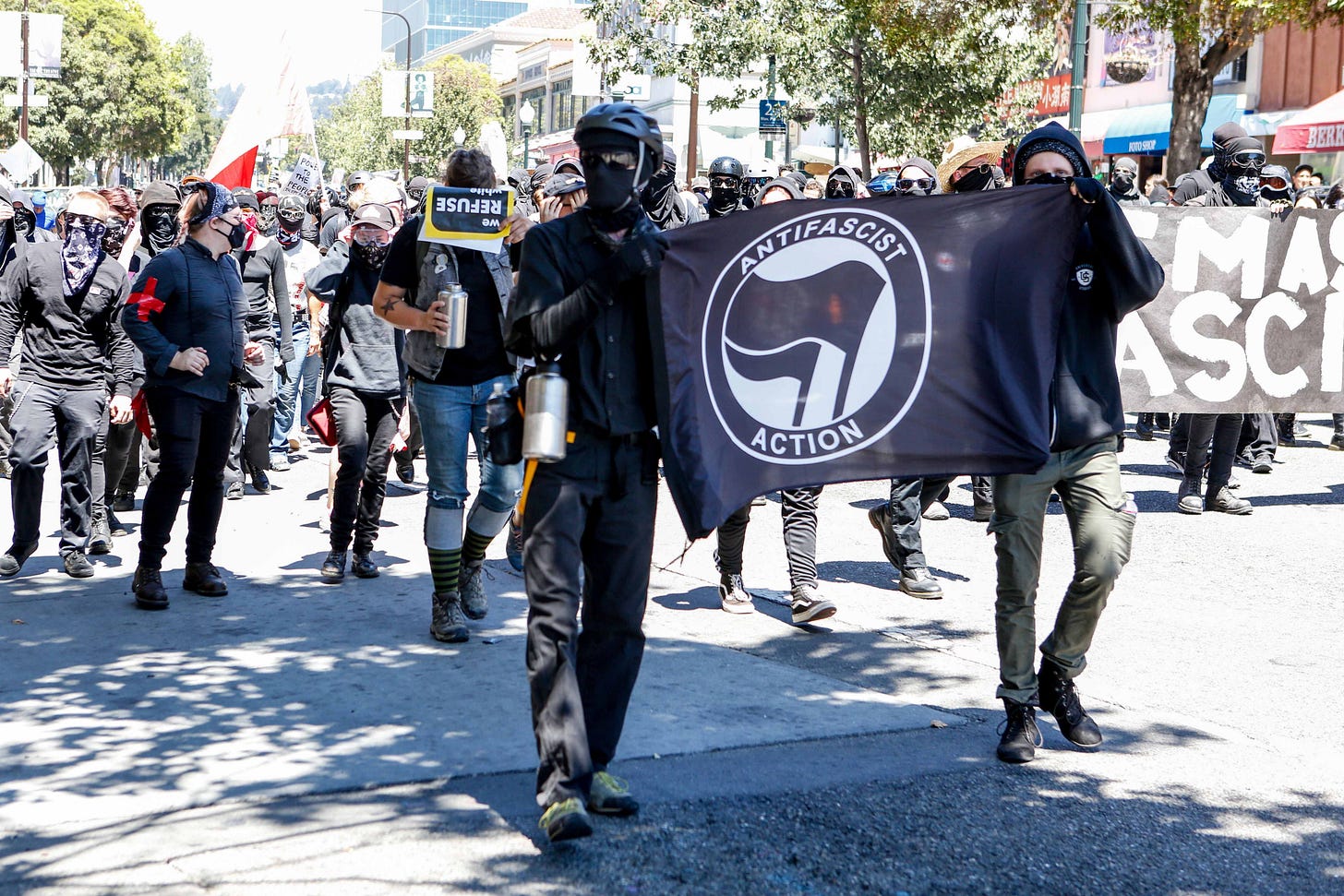Activists Have Hijacked Public Discourse
Activism based on emotion is deeply flawed, but do emotions have a legitimate role in debating the issues?
There’s an old adage from the golden age of American foreign policy: We don’t negotiate with terrorists. The logic of this unbending policy can be boiled down to a rather simple analogy:
If you give a mouse a cookie, eventually it’ll want a glass of milk.
To translate… If you acquiesce to the demands of a terrorist, they’ll only give you more demands. The concept is simple enough to understand when we’re discussing foreign threats.
The idea of Soviets invading through Alaska in the 80s was practically laughable. A land war across the United States would be a fools errand when stacked against the willingness of the American people to repel invaders. A foreign enemy isn’t logistically difficult to combat. A domestic one, however, is another matter entirely.

Calling activists today a domestic enemy is largely an exaggeration, and I’m not suggesting we respond to them in the same manner as we do foreign enemies. However, the strategies and tactics used by activist organizations in the past few years have demonstrated that our response up to this point has been inadequate.

The 1st Amendment still applies, as does every other amendment in the Bill of Rights. I’m not advocating for a radical response change akin to ignoring the Constitution. What I’m suggesting is far more boring: A conscientious, fact-based, response to their demands rather than allowing them to use the 1st Amendment as a cudgel that automatically legitimizes their ideals without deeper analysis.
It’s a little too soon to provide that level of analysis for the current anti-Israel protests that have popped up all over the United States in the last week or two. So let’s use some more tenured examples to demonstrate what I mean, though I’m confident many parallels could be drawn.
BLM and the Defund the Police Movement
I won’t rehash the history of the Defund the Police movement here, as I’ve discussed it many times and I’m sure my more seasoned readers are growing tired of hearing about it. Instead, let’s drill down into the strategies and tactics used by BLM and how they have turned our political system upside down.
The overall strategy I’ve been able to discern from the Defund the Police movement is a focus on emotion. Rather than a free exchange of ideas regarding specific police reform measures, an emotional plea has been made to create a one-size-fits-all sweeping change to local police departments across the United States.
With the power of social media, data and facts surrounding the true size and scope of the problem BLM has been struggling against are being drowned out by emotional arguments that de-emphasize the use of critical thinking.
Rather than address specific areas of improvement within law enforcement, a nationwide policy has been pushed forward wherein police departments receive less funding across the board, regardless of their prior adherence to what many of these activists are advocating for.

A fact-based analysis of the problem would likely have led to increased funding for tactical and de-escalation training. Perhaps even a push for hiring more cops to meet the greater resource needs of a community oriented policing model. Instead, we’ve seen depleted ranks and inadequate staffing to handle even the most basic calls for police service. Training has declined because there aren’t enough cops on the streets to allow other cops to attend training.
If the intention was to improve policing to meet the demands of a supposedly oppressed public, BLMs efforts over the last half decade have achieve the exact opposite of what they wanted. Instead, they’ve found themselves with understaffed and under-trained police departments that are expected to provide better services than previously offered when those same departments were better staffed and better trained.
All of this nonsense can be traced back to the use of emotion to push a narrative rather than facts. Facts such as the infinitesimal number of individuals being shot and killed by police compared to the population size1. Or how about the fact that racial bias among police officers is lower than the average population2. Or even facts surrounding the societal problems that have exacerbated issues in minority communities that have nothing to do with policing efforts3.
The facts didn’t bear out what Defund the Police activists wanted them to, so they used emotion to stymie the facts. The result… crime on the rise4, drug overdose deaths at all time highs5, and an industry nearly destroyed instead of improved while nothing else has been created to stand in the breach.
It was arguably the greatest missed opportunity in police reformation history when BLM allowed emotions to dictate policy.
Climate Change Protests
We’ve seen these protests across Europe for the past decade or more. We’ve seen them in the United States, though they haven’t been as bombastic as throwing food on priceless works of art.
Whether or not these protests are borne out of a legitimate concern for the well being of the planet is not the focus of this article. That can be debated on any number of entertaining and informative YouTube channels.
So let’s not get caught up in that. Let’s focus on the strategies and tactics of these climate change activists and what impact that has had on actually find a solution to the problem.
Once again, emotion has plagued what could be a more substantive debate. If someone suggests they believe climate change is real, but questions the extent to which humans have an impact on it, they’re called a climate change denier; lumped into the same category as someone who believes the whole thing is a conspiracy theory. On the other side, if someone claims climate change is entirely caused by humans, they’re accused of being a globalist shill.
Emotion has spun the climate change debate out of control to the point that people are divided on nearly religious lines. Instead of arguing facts, or even arguing whether or not a certain fact is legitimate, emotion has obscured the discussion to the point where an unstoppable force keeps colliding with an immovable object.
The tactic of using emotion to sway opinion has done little else than hinder substantive progress. Emotions, it seems, are largely unhelpful. But is that the whole story?
The Power of Emotions Can be Used to Support Fact-based Analysis
Facts should be the guiding star when discussing policy change on any level. However, without an emotional plea, facts rarely garner significant support. A popular conservative influencer coined the phrase “facts don’t care about your feelings”. And while I suppose that’s technically true, facts absent emotion won’t be received well among inherently emotional creatures.
If we want ideas like properly funded police departments or effective climate response to win the day, we have to make an emotional plea alongside the facts that back up those ideas. The activists we’ve grown accustomed to encountering aren’t wrong to use emotion in their rhetoric. It’s an effective way to build support. However, among several of the ways they go wrong is with their ignorance of the facts.
So, let’s take a page out of their book. But rather than letting raw emotions guide us, we must use emotions to support our fact-based arguments.
For instance, we say factually that defunding police departments leads to higher violent crime. Sure, that’s factually true. But it lacks the emotional impact of what higher violent crime means to the every day citizen.

Herein lies an opportunity to use emotion to bolster facts. We’ve started to see that happen more often, but it must continue. Facts like violent crime increasing are aided in the public conscience with personal stories of what violent criminals do to innocent victims. The raw numbers are helpful, but they mean nothing without a story behind them.
It’s easy to point to data and tell everyone that crime is a problem. But it’s hard for everyone to accept mere data. We need to find the emotion in those hard numbers. We must point the every day citizen to the stories behind the data that shows the facts are on our side.
If we ignore the emotional component of the facts we hold dear, few others will find reason to support the hard work law enforcement professionals put into fighting the rising tide of crime some of us have experienced personally.
Clinging to facts without regard to the power emotions bring to the table will only guarantee that those who cling to emotion will win, regardless of what the facts say.

References
Statista. (2024). Number of people shot to death by the police in the United States from 2017 to 2024*, by race. Statista. https://www.statista.com/statistics/585152/people-shot-to-death-by-us-police-by-race/
Pelham, B. (2024, July). Are Police Officers More Racist than Most Other Americans? It’s Complicated. Medium. https://brettwpelham.medium.com/are-police-officers-more-racist-than-most-other-americans-its-complicated-8c32c45be74f
Solomon, D., Maxwell, C., & Castro, A. (2019, August). Systemic Inequality: Displacement, Exclusion, and Segregation. Cap20. https://www.americanprogress.org/article/systemic-inequality-displacement-exclusion-segregation/
Gramlich, J. (2024, April). What the data says about crime in the U.S. Pew Research Center. https://www.pewresearch.org/short-reads/2024/04/24/what-the-data-says-about-crime-in-the-us/
National Institute on Drug Abuse. (2023). Drug Overdose Death Rates. National Institute of Health. https://nida.nih.gov/research-topics/trends-statistics/overdose-death-rates


Very well organized thoughts and sound conclusions. I hope this gets shared broadly.